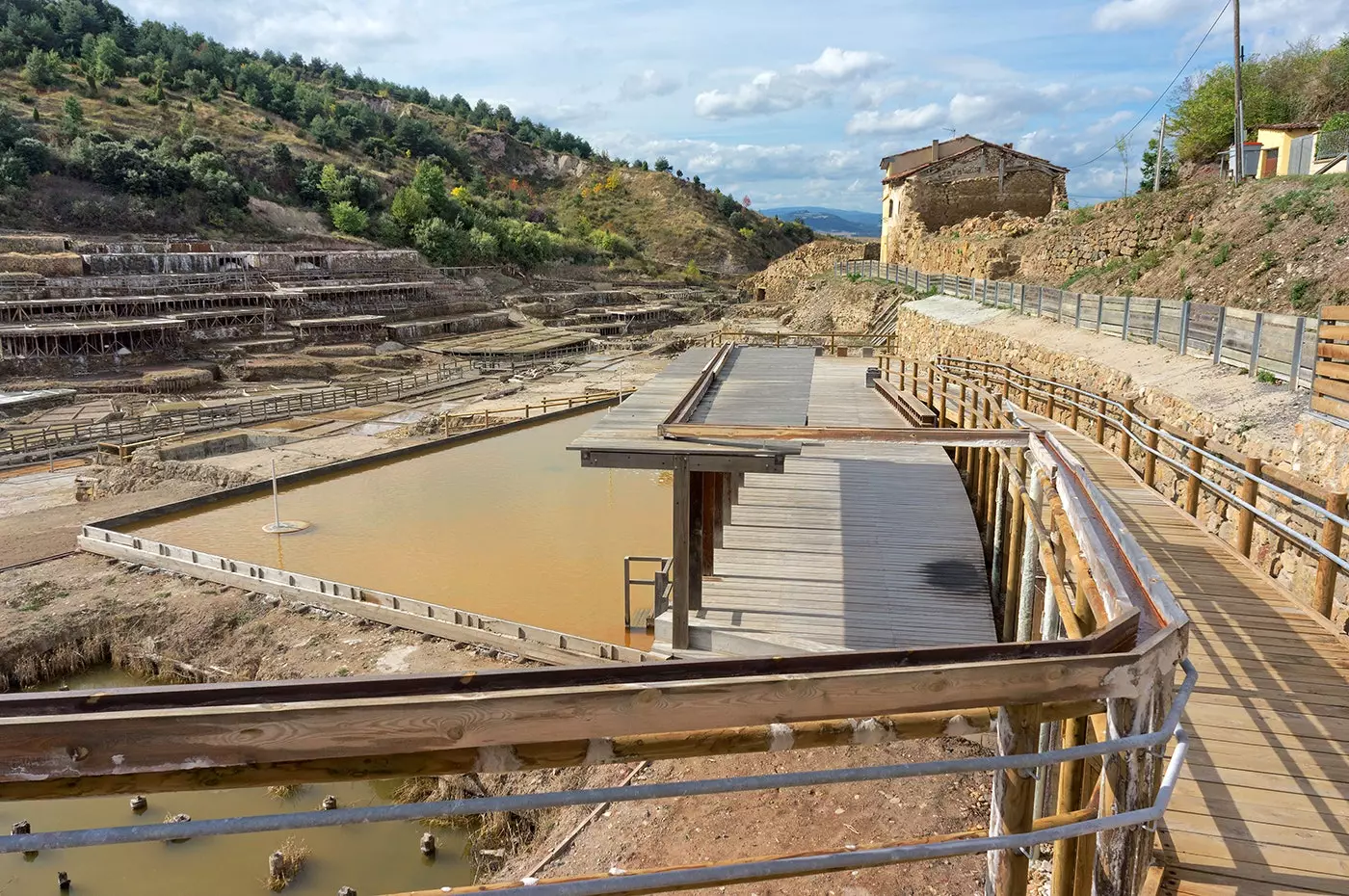
The Cultural Landscape of Valle Salado is a destination to discover
They constitute a unique phenomenon in the world since, for 6,500 years, they have produced salt in a process that has practically not changed since the Romans. But in its long history there is also a period of decline that, in recent years, with the launch of a recovery project, has allowed him to live a second chance.
The salt valley, just 30 kilometers west of Vitoria, allows us to contemplate a unique landscape that seems taken from another time and that in summer, with its whitish terraces that hang from the slopes, reminds of other latitudes. It's about a thousand-year-old and resilient salt valley , which has managed to survive socio-economic, political and historical changes by adapting the surface of the eras that form it to what the market demanded (thus, it was a salt factory for 6,500 years and is now reinventing itself as a benchmark for quality in the production of salt and how tourist and experiential center ) .
A HISTORY OF SALT PRODUCTION
The history of Añana Salt Flats It starts 6500 years ago. Thanks to archaeological excavations and the remains of ashes found, it has been known how salt was produced in prehistory (salt water was left in ceramic pots and, after being heated over a live fire, it produced blocks of salt that were easier to transport) to other towns for sale). From the Neolithic and for more than 4500 years fire was used, until the arrival of the Romans in the 2nd century BC., when they built the salt flat practically as we know it today.
In the 5th century, the Roman settlement broke up and the population moved to live in what is now Valle del Salado, where they gradually grouped themselves according to feudal and ecclesiastical habits in small villages where everyone wanted to control production. Under the rule of Alfonso I the Battler , King of Aragon and Navarre, a wall was built around the two towns in the valley , and it was granted the title of town in 1114, the first in the Basque Country. Then also created community of knights and heirs of the Reales Salinas de Añana which is still in force (although at the end of the 20th century the former owners ceded the property of the salt mine to the Foundation that today manages them although they continue to hold shares) .
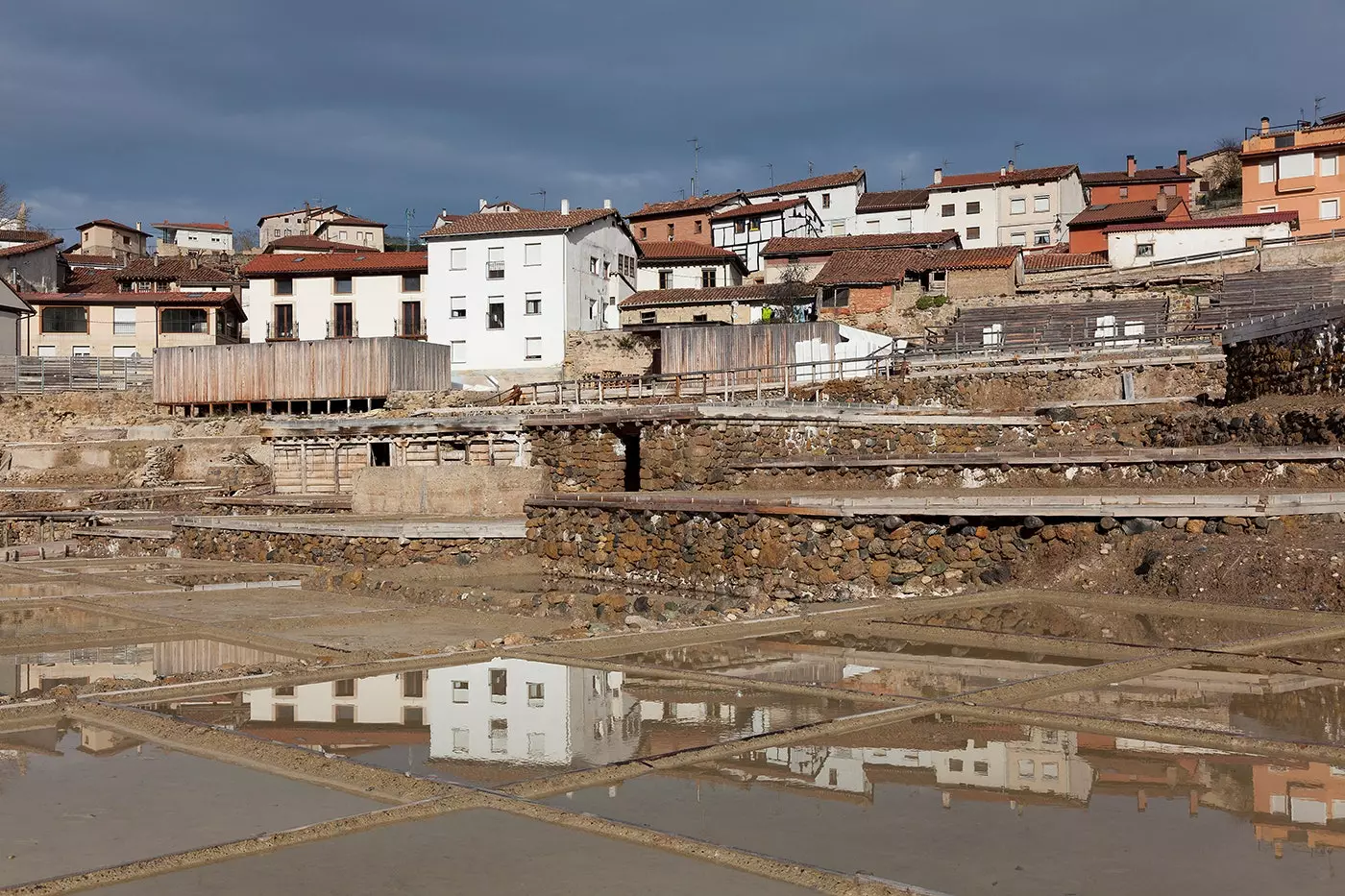
Town of Anana
THE GRADUAL DUSK OF AÑANA
Over time, Añana was also affected by numerous wars and revolts and, in times of Philip II , it was decreed Salt tobacconist in Castile by which a production agreement was reached with the salt producers to standardize the price of salt and collect taxes for the crown. In addition, engineers were sent who built much of what is the current facility.
Subsequently, the 19th century architects harmed the sustainability of the place by betting on harder materials for eras such as the stone and boulder. In this way they obtained a much whiter salt but with the pernicious secondary effect of overloading the ground with heavier materials. Furthermore, at the end of the century, the salt market is liberalized (the Estanco ends in 1870) and with industrialization and new transport systems the price of salt fell, gradually abandoning production.
To get an idea of the rapid decline of the Valley, in the 60s of the 20th century there were about a thousand people and there were about 5 thousand production platforms ; in the year 2000 there was only one salt mine left with a farm of 40 eras. Thus, in just 40 years, a thousand-year-old production was on the verge of disappearing and that is when the turning point with the revitalization of the project.
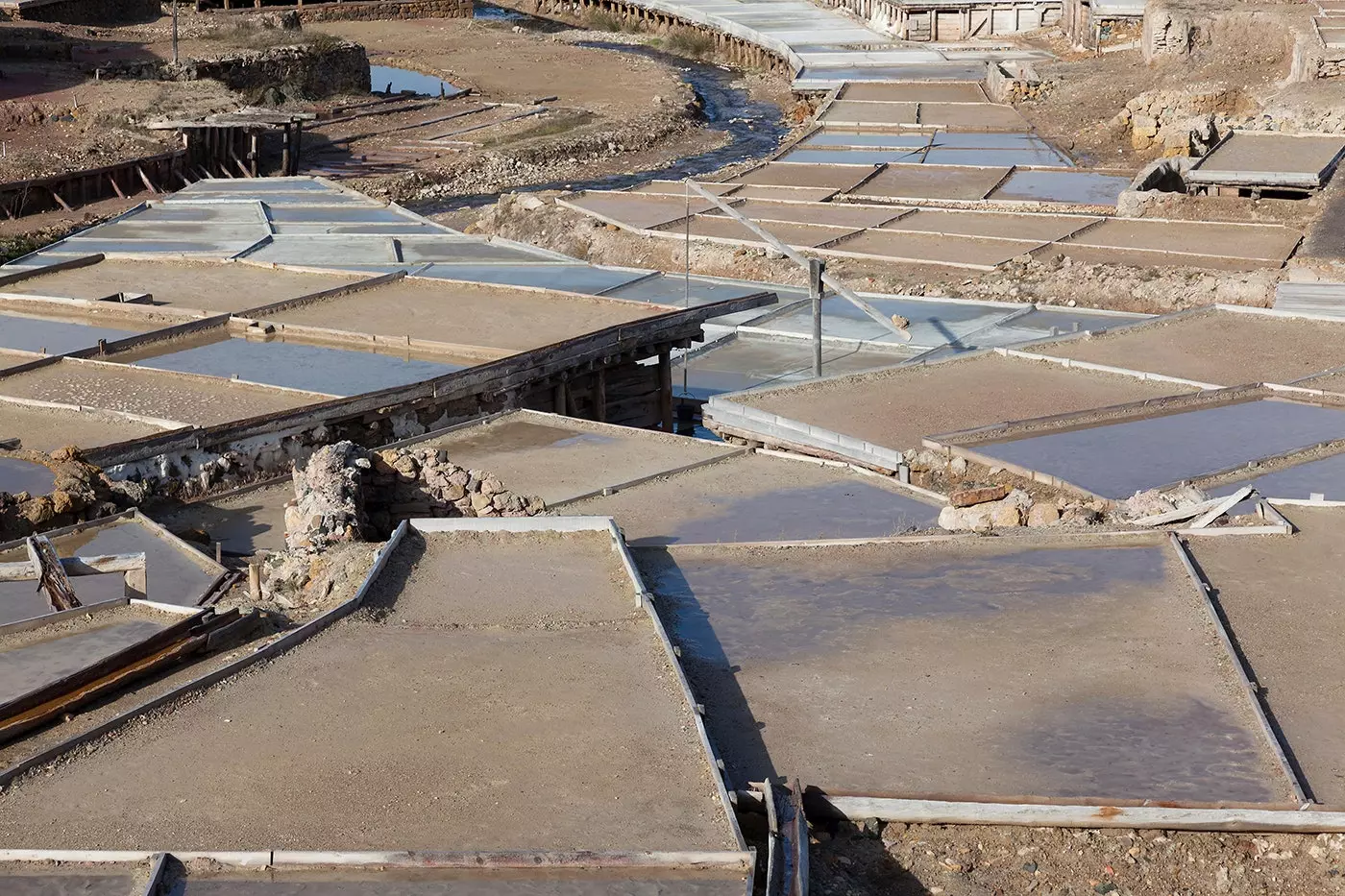
This is the salty landscape of Álava
THE NEW SALINAS DE AÑANA PROJECT
At the beginning of this century is when awareness of the need to transform the deteriorated territory and value the craft production of quality salts . The new management is rebuilding an ancient landscape that is already recovering the second third of the total productive eras of the Valle del Salado. AND he project is now 16 years old and has received the Europa Nostra award , the oldest heritage conservation award at european level and in 2014 it was a candidate for UNESCO World Heritage status, in addition to being considered a historical monument.
The salt pans currently have an extension of 6km long by 3 wide in a valley of 120,000 m2 entirely dedicated to salt production, at its peak. From the upper part of the facility, natural springs of salt water spring from which three main channels and a network of sub-channels depart from which the salt reaches the entire facility and which in summer, with sun and good weather, allow salt to be produced .
THE MILLENARY FORMATION OF LAS SALINAS
In the Salinas de Añana salt is only produced by hand during the spring and summer months, about from May 1 to September 15 , when high temperatures allow natural evaporation, unlike in large industrial factories that produce salt throughout the year.
Throughout the valley there are numerous conduits or channels, called "rolls", which distribute the brine from the springs where it gushes naturally with a concentration seven times higher than that of sea water, and which has been formed naturally throughout millions of years when sea water enters and creates a sediment of salt under the earth. This is pressed by harder materials from the upper strata to make the salt rise to the surface as if it were a bubble accompanied by the materials it finds in its path (clay, limestone, etc.).
Very high temperatures are not suitable, the ideal is to have a temperature of 23 to 28 degrees with the north wind that brings the humidity necessary for the collection of salt. All the salt producers produce at the same time in summer, in a system similar to irrigation where each salt producer had their turn assigned to salt water for the production of salt. The star material of the saline is clay , the clay produced naturally and that, when the turn comes, is removed so that the water flows on your property and when it ends, it is put back to pass the turn to the next saltworker. The disputes were not about who produced more or less salt but about the right to the most precious treasure, brine or salt water so there was picaresque and holes could be made in the clay so that the deposit continued to be filled.
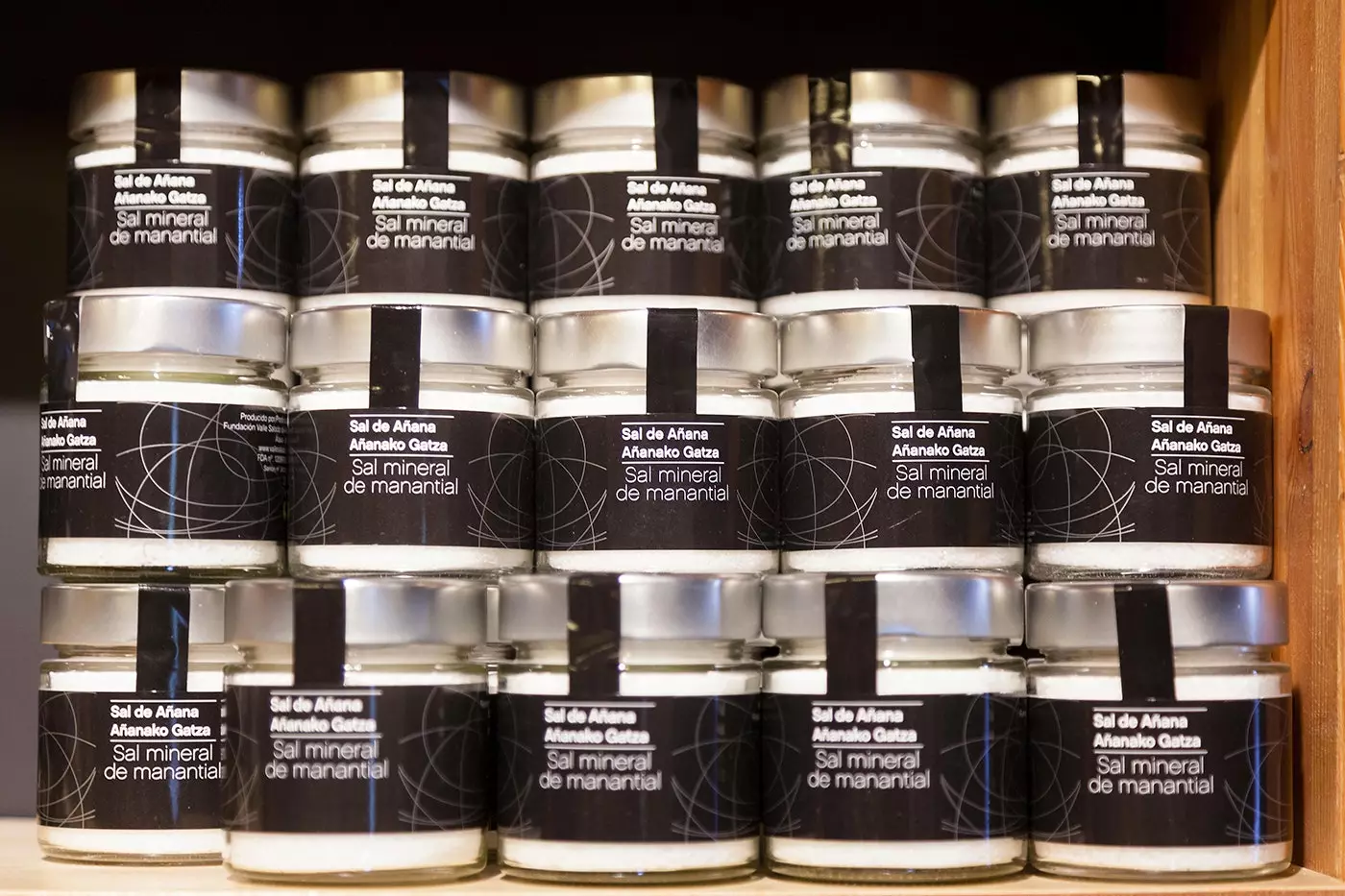
The different types of Añana salt
NEW QUALITY SALT
The salt market is increasingly booming offering a greater variety of colors and flavors . With the use of new materials, it has changed color, obtaining a very white and bright salt without any treatment.
From the beginning of the recovery of the project it was clear that Añana would not be the factory that it was but it was due prioritize the production of quality salt about the amount. Thus, in recent years it has been possible to produce a gourmet salt used by great chefs such as Dani García, Martín Berasategui, Andoni Aduriz or Joan Roca.
There are a total of ten chefs with 26 Michelin stars the ambassadors of Añana salt, who use it in their restaurants endorsing its quality: it does not salt excessively, and using much less quantity manages to enhance and intensify the flavors of food due to the richness in minerals and trace elements of a salt with 200 million years of sedimentation.
FOUR TYPES OF SALT
Four products are obtained in the Añana salt flats: mineral salt, fleur de sel, liquid salt and chuzo or salt stalactite.
mineral salt it is used more for cooking and making stews; while, the flower or flake of salt It is applied directly on the already cooked product and is also visually more attractive. liquid salt It contains the same brine that flows from the springs and is used to dress salads and for baked, grilled and grilled products (it is sprinkled on the crystallizing food, forming a film of salt). Finally, the pinch of salt It has gone from being an ignored product and to which historically no value was given to becoming, after different studies and salt tastings, in the most exclusive and gourmet product since the salt obtained from them is very fine and very flavor enhancing. It has recently been launched on the market with a price of 600 euros per kilo.
In addition, since 2012 a ten flavor collection arising from the need and the great demand in the market. Thus, Añana salt has been fused with different flavors of the Mediterranean diet and other more exotic ones such as olives, cayenne, fine herbs, wine salt, curry or black pepper.
THE CULTURAL PROJECT
The other Salinas de Añana project is the cultural, for the dissemination, learning and research of new applications of salt. Currently, practically half of the salt pan has been recovered and leisure, enjoyment and tourism areas have also been created, as well as a shop where different types of salt can be purchased.
In May the inauguration harvest with a renowned chef; In September the end of the harvest festival is celebrated (the _entroje) _ and there is even a mountain marathon that ends in the Valle del Salado. Meanwhile, in summer, the most visually attractive period, you can learn to produce salt; In addition, there is also a grandstand where events are held. The most important day is July 10, San Cristobal, when about a hundred people from the town represent a historical reenactment. In addition, in the installation there is a small outdoor SPA where you can enter legs and arms to enjoy the relaxing benefits of water up to seven times saltier than the sea.
The visit to the salt mines is completed with a tasting in its interpretation Center where we can test our senses. Not only the taste but also sight, smell and touch since several games are proposed in it to try to distinguish flavors, textures, smells and colors and that serves to round off a visit as surprising and attractive as it is instructive.
*To visit the Salinas de Añana you have to do it through one of the (very complete) guided tours offered by the foundation, prior reservation through its website or by phone by calling +34 945 351 111 or through the mail [email protected]
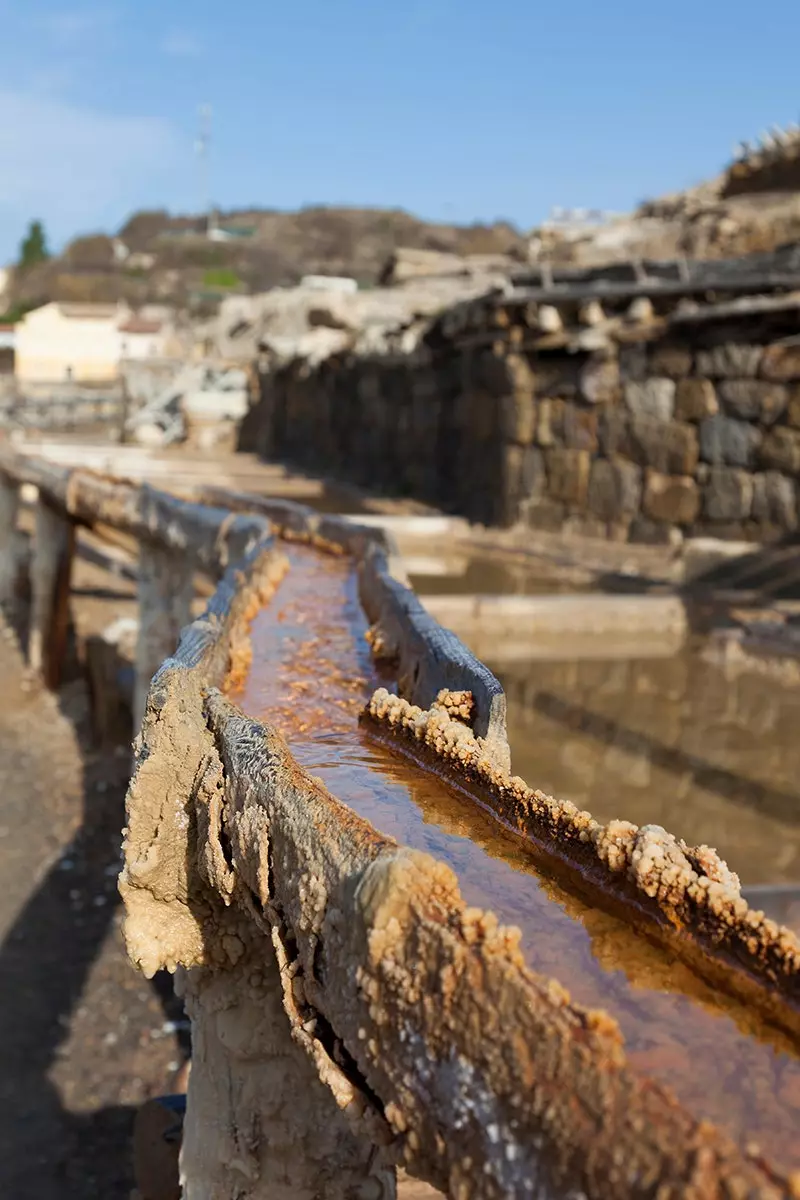
The totally traditional way of producing salt
